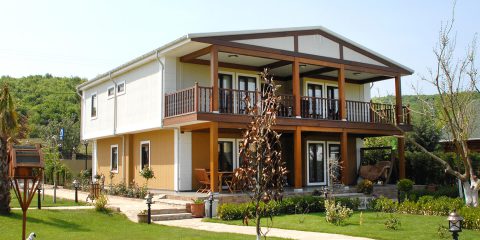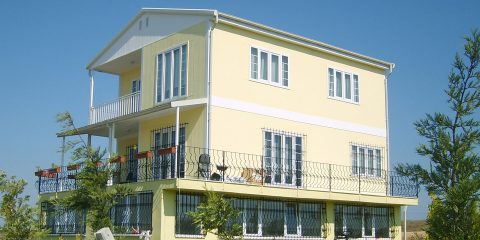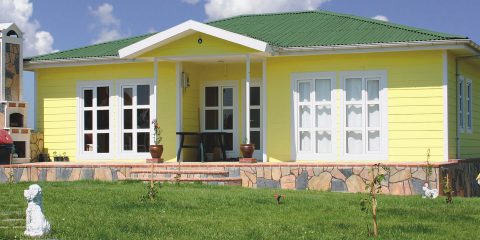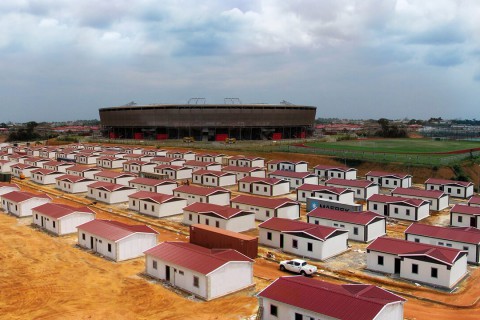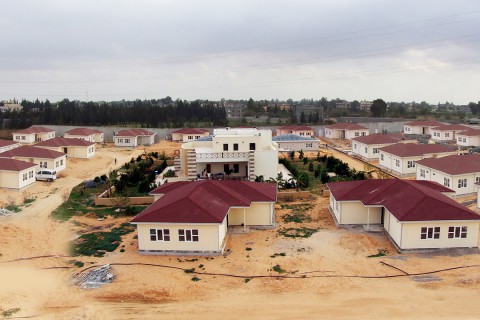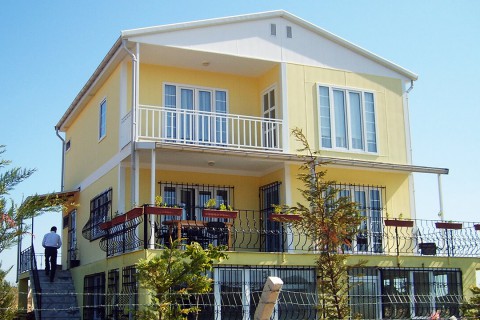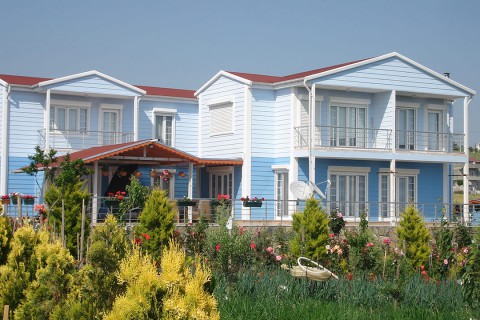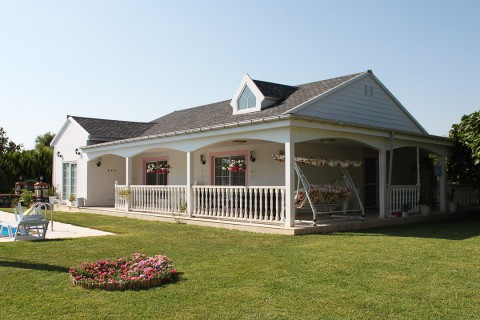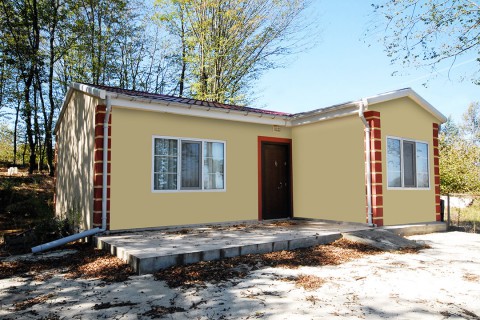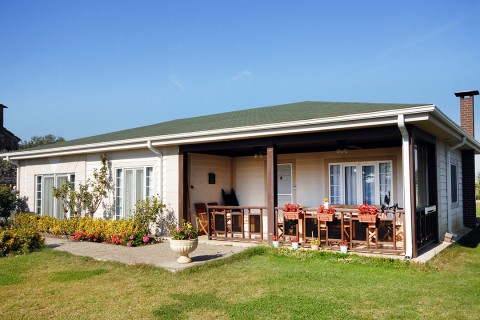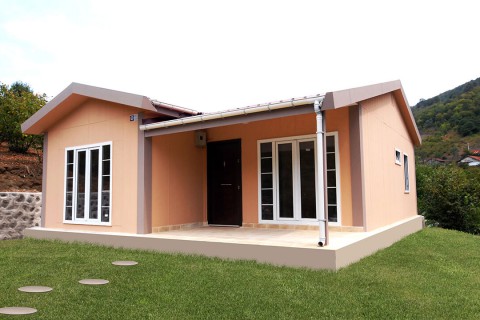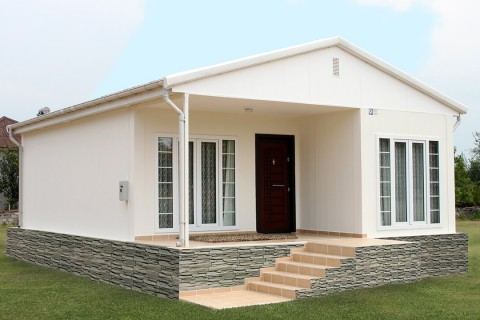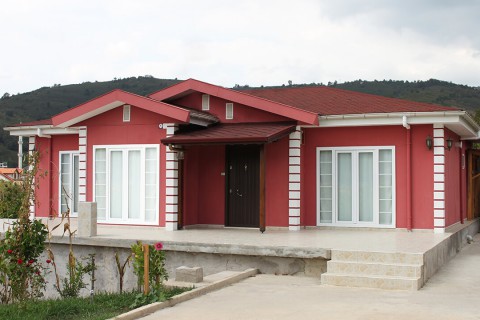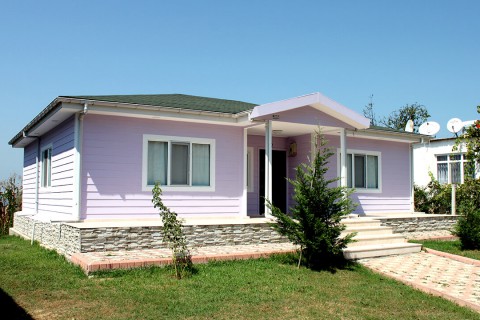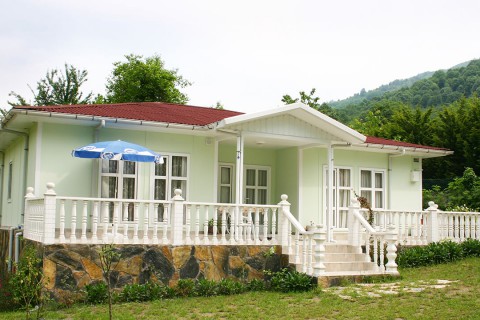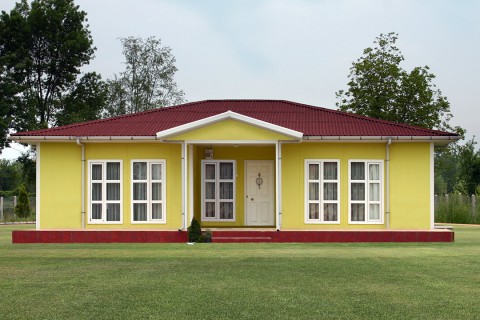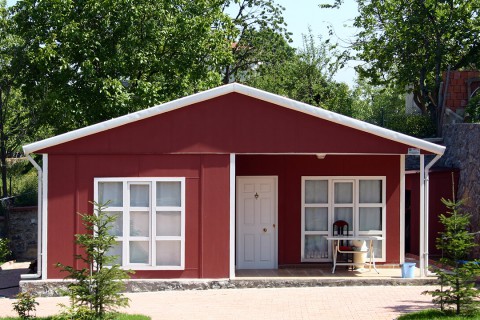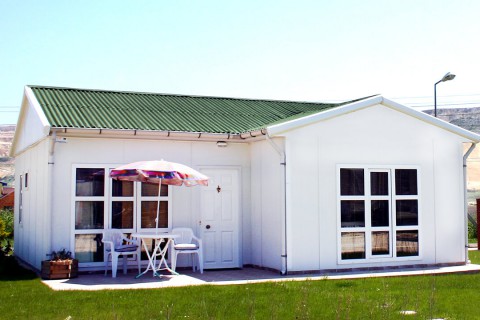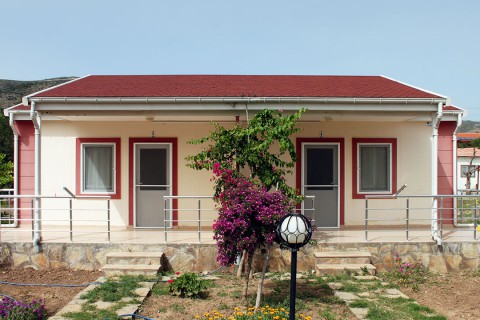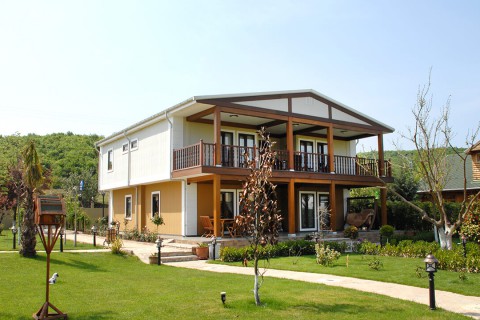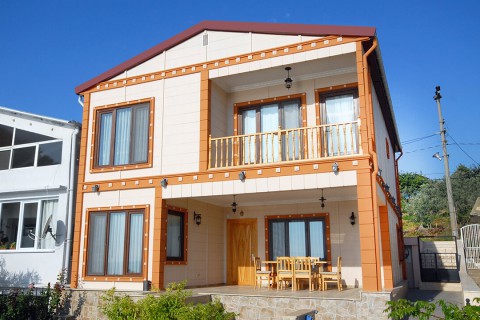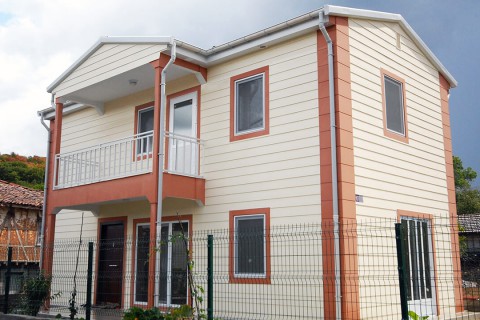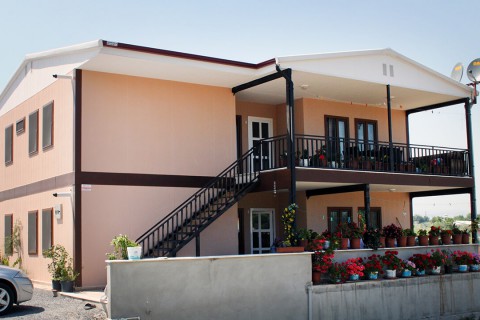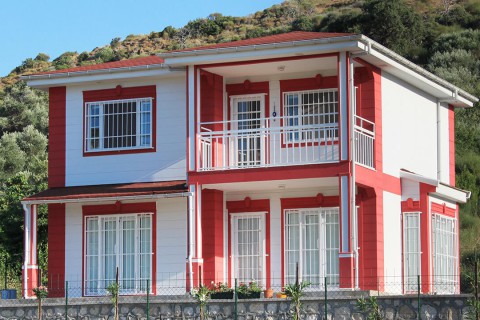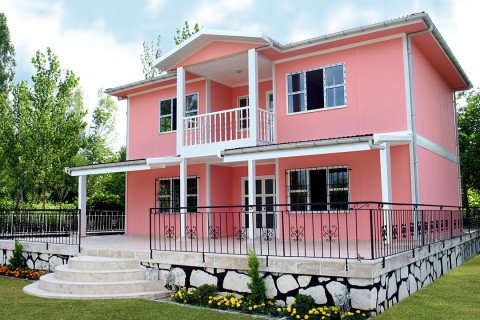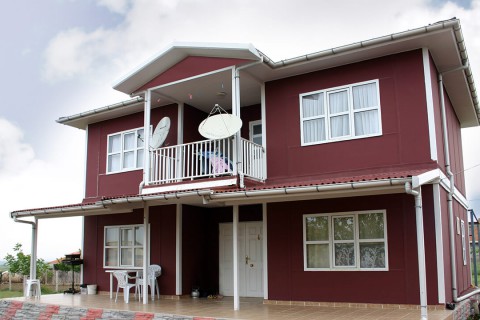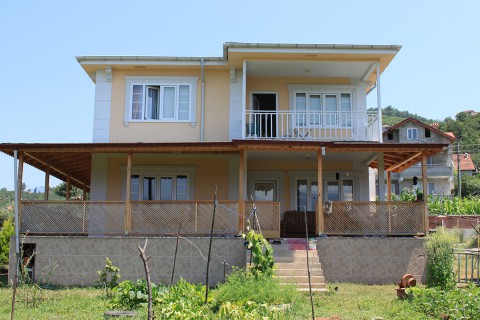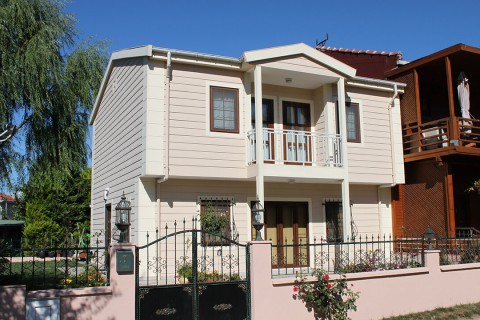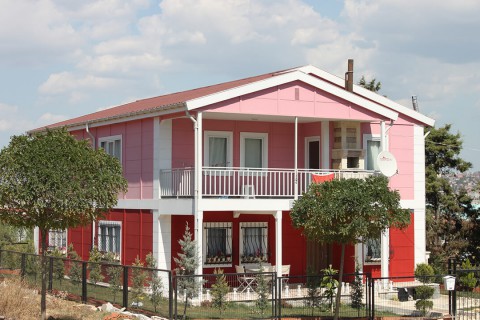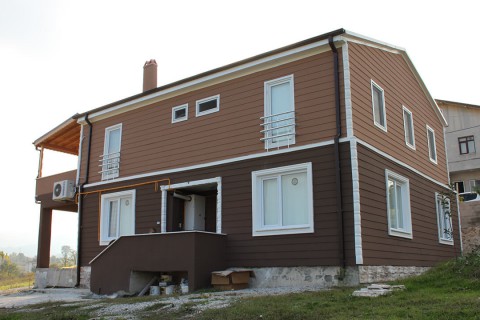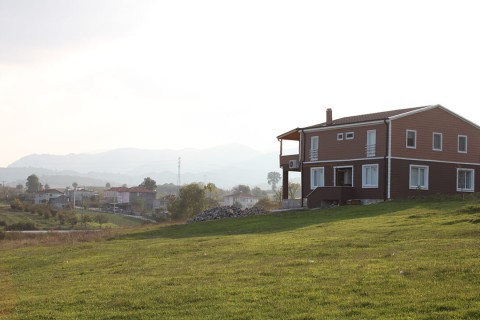Prefabricated House - Product Groups
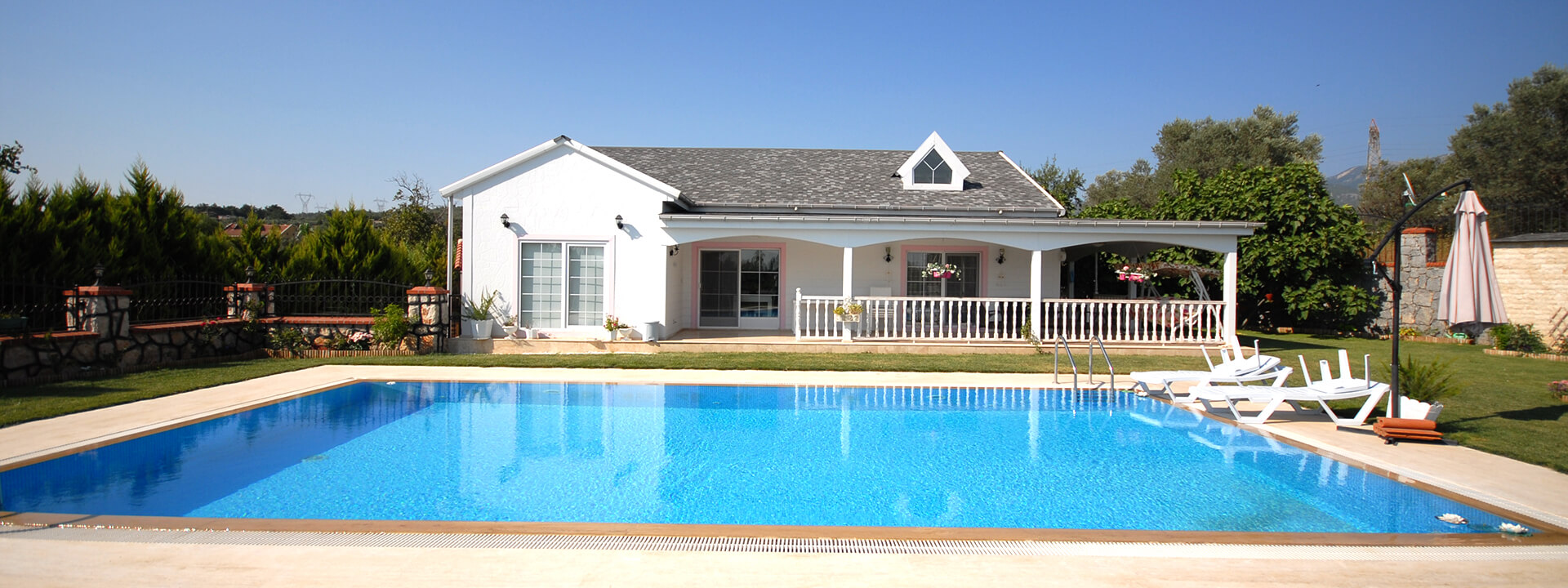
Prefabricated House Solutions
Prefabricated houses are not only a home but also a contemporary, technological and healthy life style. Our prefabricated houses produced with cutting edge technology are preferred based on such facts that they are affordable and have long service life and low maintenance cost. We are employing A1 class fireproof, water-resistant Hekim Board brand fibercement products together with high density galvanized steel in the production of our prefab homes. We’ve been carrying on our activities inland and abroad either unique projects specific to individuals or collective housing projects. Our vision is not only manufacturing houses but also offering a new life style.
Advantages of Prefabricated Houses
Prefabricated houses are flexible and light structures and resistant to earthquakes and all kinds of natural conditions.
Necessary structural and thermal insulation calculations are carried out depending on the climatic conditions of the region where prefabricated house will be located.
Prefabricated houses can be designed according to the required architectural conditions.
Construction costs of prefabricated houses are more economic than concrete and other buildings.
Manufacturing and installation times of prefabricated houses are short.
Maintenance costs of prefabricated houses are low.
Prefabricated houses can be disassembled and moved to another place whenever you wish.
Facade cladding material used in the prefabricated houses is A1 class fireproof, water-resistant and have no substance hazardous to environment and human health.
Decorative works introducing wood pattern, stone and brick texture to facade cladding can be performed.
Steel construction used in the prefabricated houses is manufactured from ST 52 grade high density galvanized steel with no welding process.
Frequently Asked Questions About Prefabricated Houses
- How is a prefabricated housing made?
- What does a prefabricated housing mean?
- how does a prefabricated housing cost?
- What is included in prefabricated housing prices?
- Is there any conveniences provided for payment when buying a prefabricated housing?
- How to obtain an occupancy permit for prefabricated housing?
- How to install a prefabricated housing?
- How long does a prefabricated housing last?
- How is prefabricated housing manufactured?
- How healthy does the prefabricated housing get to be?
- What are the differences between prefabricated housings and other housings?
- In which regions can a prefabricated housing be installed?
- How is the prefabricated housing electrical installation and plumbing done?
- Is thermal and acoustic insulation of prefabricated housing efficient?
- Can the prefabricated housing disassembled and transported?
- Is the prefabricated housing guaranteed?
- Can the prefabricated housing be purchased via the internet?
- What other prefabricated buildings are available besides the prefabricated housing?
